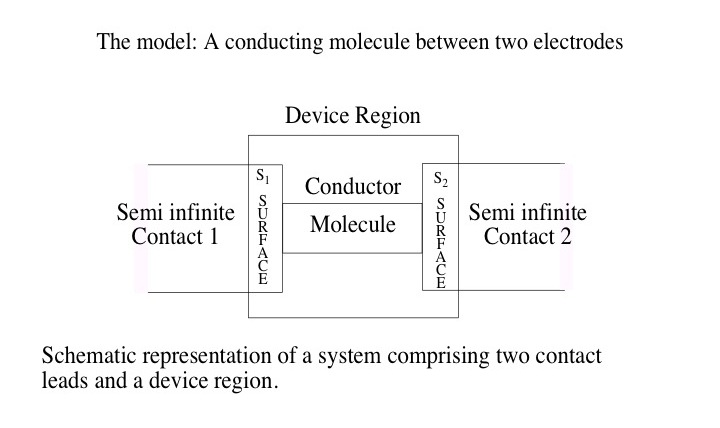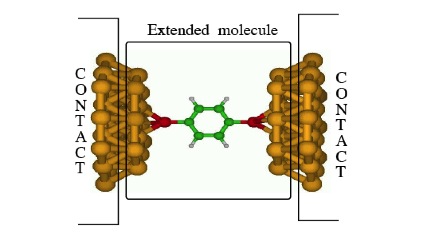Semiconductor-based electronics has rapidly improved in the last years following largely Moore’s law from a 90 nm process in 2002 to:
- 65 nm in 2006
- 45 nm in 2008
- 32 nm in 2010
- 22 nm predicted for 2011
- 16 nm predicted for 2013
- 11 nm predicted for 2015
It has been predicted that cost increases and physical problems such as current leakage due to quantum tunneling will limit further developments according to Moore’s law in transistor industry although optimists see Moore’s law valid for an almost unlimited time. Nevertheless an alternative to semiconductor-based electronics has already to be found now. Such an alternative is molecular electronics.
Molecular electronics is a highly promising as a possible replacement for the current silicon-based technology. A prerequisite of molecular electronics is a detailed knowledge of current-voltage characteristics for suitable molecules. Such molecules may have conjugated central part localized between two multi-functional end groups that can transport electrons similarly as the central part, stabilize the molecule, and in addition can connect via suitable functional groups such as thiols to the leads, i.e. the solid state electrodes.


In this project we calculate the electron flow through conjugated molecules fixed between metal electrodes as shown in the Figure. For this purpose we use the non-equilibrium Green’s function (NEGF) method. Due to its ability of taking care of open boundary conditions including electron-phonon and electron-electron interactions, the NEGF method is capable of reliably predicting quantum transport data. The central part of this method is to obtain an accurate Hamiltonian and a self-energy term, which effectively accounts for the coupling of the conducting molecule to the leads; and from which one can calculate the Green's function, which is essential for the transport calculation.

